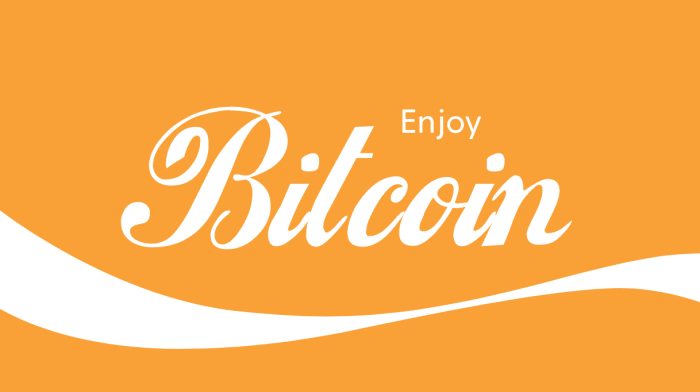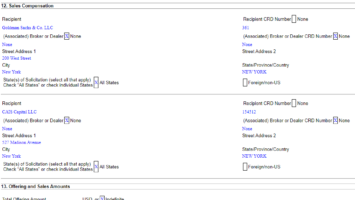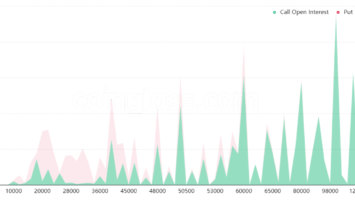Brands — A Topic Even More Mysterious Than Cryptography Itself
The King Of Brands Has Been Dethroned
Did you know Coca-Cola was, until recently, considered the most valuable brand in the world? The value of a brand is called “brand equity.” There’s even a dictionary definition for it:
“The commercial value that derives from consumer perception of the brand name of a particular product or service, rather than from the product or service itself.”
In other words brand equity is what a brand is worth over and above what the product itself is worth.

(SwanBitcoin.com Graphic/data from Interbrand)
How Did Coke Get To Be King Of Brand Equity In The First Place?
Do you know where the “Coca” in Coca-Cola comes from? It comes from the coca plant, the source of cocaine. Cocaine was actually once the most important ingredient in Coca Cola. After all, oranges are the most important ingredient in orange juice, peanuts in peanut butter, and it was coca in Coca-Cola. Even to this day, both Coca-Cola and cocaine share the nickname “coke.”
Recall our definition of brand equity: “The value over and above what a product itself is worth.”
Now if you were to take out the main ingredient that gives a product all of its effectiveness — which is also what you’ve named the product after — almost all you’re going to be left with is brand value (and nearly worthless fillers like water).
This is what happened to Coca Cola!

(Image/The Atlantic)
In 1920 Cocaine Was Outlawed
Coca-Cola was forced by law to take out its main ingredient. So with necessity being the mother of invention, the folks at Coca-Cola were left with no alternative but to practically invent the idea of brand equity. Caffeine and sugar helped Coca-Cola keep some of its stimulant qualities, but let’s face facts: Coca Cola certainly no longer has the same kick it had back when it contained the powerful and addictive stimulant: cocaine.
When Coke lost its most potent ingredient, its brand equity actually went up — way, way up. This is just a fact of math. The product itself became worth less because of the removal of its most valuable ingredient, but the price did not drop.
That mathematically meant that the difference was made up by the brand equity!

Contents of a 5 cent bottle of Coca Cola – (Graphic/Swan Bitcoin)
The True King Of Brands
Reminding ourselves of this definition of brand equity — what a brand is worth over and above what the product itself is worth — wouldn’t you agree that without a doubt, the brand with the most equity in the world is in fact the U.S. dollar?
The product itself, after all, is just a rectangular piece of paper with some ink on it. Paper itself is hardly worth anything.
However, when stamped with the official mark of the dollar, the value of this paper is so high and so widely recognized that when Interbrand attempts to compare the brand equity of other brands to one another, they measure it using the brand of the U.S. dollar! Now there’s a powerful brand.
What other brand has a dedicated spot for its logo on the keyboard of every computer in the world? There’s for sure no Coca-Cola key on my keyboard.
The consumer perception of the U.S. dollar, both in America and just about everywhere else on earth, is extremely high. It’s the standard by which we judge the monetary worth of things. It’s what everything is priced in, at least in the U.S.
Economists have their own fancy term for everything, so they don’t call this phenomenon “brand equity.” Instead, they call the difference between what a dollar is worth and what a rectangular piece of paper is worth the “monetary premium.” But it means exactly the same thing — what a dollar is worth over what the product itself (a piece of paper) is worth.
How Did The Dollar Get To Be The True King Of Brand Equity?
The dollar’s brand equity used to be zero.
Interestingly, just like how Coca-Cola used to have something much more potent in it than it does today, the same is true of the U.S. dollar.
The dollar used to be fully 100% backed by and completely redeemable for pure, solid gold. Until 1933, one dollar was worth about one-twentieth of an ounce of gold.
Back then, the dollar’s brand equity was actually zero. The U.S. Federal Reserve bank would give you an ounce of gold for a $20 note. Then, in 1933, Franklin Roosevelt confiscated consumer gold and passed the Gold Reserve Act. Suddenly you needed $35 to get an ounce of gold.
But technically, the dollar still had no brand equity. It simply became worth one thirty-fifth of an ounce of gold. It also seems from the historical records that it became harder to get that ounce of gold then for your stack of one $20 note, one $10 note and one $5 note.
But then, suddenly, all at once, in August 1971, the dollar’s brand equity went from absolute zero to one whole dollar per dollar. Brand equity instantly went from 0% to 100%.
That was when the dollar was no longer backed by nor redeemable for gold. All the value that the world put on the dollar became, all at once, entirely brand equity.

(Graphic/Swan Bitcoin)
And since all the dollars in the world were certainly perceived by all the people in the world to be worth more than just the Coca-Cola company, we can all agree then that the U.S. dollar’s brand equity was more than Coca-Cola’s brand equity. So we can safely conclude that since August 1971, the dollar has been the king of brand equity. It’s just simple math again.
Just as Coca-Cola managed to remain valuable without the cocaine in the product, the U.S. dollar remains very valuable without the gold backing it. That being said, it’s not quite as valuable as it used to be.
A Dollar Isn’t Worth What it Once Was
The purchasing power of a dollar has fallen since it became 100% brand equity. Back in 1971, a dollar bought about 900 milligrams of gold. It now buys less than 10 milligrams of gold. Ouch. You know how an open bottle of Coke loses its fizz after a while? Seems the same thing happens to dollars.
What We Can Learn From The Brands That Beat Coke?
According to Interbrand, the top brands that surpassed Coke in brand equity were Apple and Google.
Let’s remind ourselves yet again of the definition of brand equity — that it is what the brand is worth over and above what the product or service itself is worth.
Brands That Beat Coke Delivered More Than A Brand
Is it really true that we value Apple and Google not because of the value of what their products and services provide to us, but simply because of our brand perception? I don’t think so. I think Interbrand is wrong about the brand equity of these companies.
We use Apple products because they work really well. I wrote this article on a nine-year-old Macbook Pro! I did it using Google Docs, which is free! I researched the article with Google. There’s no reliable substitute for Google, especially for advertisers, who are the ones paying for it, since it is free to me.
No. When I think about it, I realize these companies have utility that goes way beyond the perceived value of their brand, and that this value was missed by Interbrand’s researchers.

(Graphic/Swan Bitcoin)
What the people at Interbrand missed is this: the value of the products and services provided by Apple and Google is not measured in the cost of materials, but in the benefit we get through how computer code makes those materials do extraordinary things.
It Is The Code That Is The Fundamental Value
The brilliantly engineered software is not part of the brand equity — it is not something beyond the value of the product itself as indicated in the definition of brand equity. It is a part of the product itself. In many cases it is the product itself. The code is certainly the the most potent ingredient or the most important ingredient if we recall the terms we used in our discussions of Coca-Cola and the dollar.
Put concretely, if Interbrand analysts compare two similar office chairs, one with the Herman Miller brand and another with no brand, they’d say the brand equity of the Herman Miller chair is the difference in price between the two.
But by this methodology, those same analysts would look at a Mac without its operating system and software on it beside one with all that software and be stumped as to why the first would be worthless and the second would be worth thousands of dollars. This is because they aren’t considering the value of the code.
The Value Of The Digital Realm
Behold then, the value of the Digital Realm. It is different from the physical realm of weights, measures, commodities and goods. It is different also from the brand realm where a name and logo command value.
The Digital Realm is a third realm, which not everybody realizes actually exists. This is why legendary investors, like Warren Buffet, who recognized the brand realm value of Coca-Cola completely missed the boat on investments like Apple, Amazon and Google. And it’s why Interbrand thinks it is brand equity rather than code that makes these companies’ products profoundly valuable.
The Main Ingredient Is The Code — And It Is Still In There
What makes these companies’ offerings valuable is their computer code and the effects that code generates. The value is what the computer code actually does. It’s not what the perceived value is, but what its actual value is that makes these things we rely on every day so valuable.
The code creates capabilities that were previously impossible. It makes them not only possible, but easy, fast and cheap. The code makes these capabilities available not just to a few people, but to almost everyone on Earth.
But you cannot touch the code. You cannot weigh it. Measuring it by its size (in bytes) is not an accurate measure of its value. It’s what the code does that is valuable.
Humankind is still in the earliest years of our history of discovering what code can do. Look at how much code has transformed our civilization since the turn of the century. Even as late as the 1990s we called each other on actual telephones with physical keys on them. We couldn’t send text messages. We had never heard of social networks. A “high speed” connection to the internet was a 28.8kbps phone modem. There were no wireless internet connections. And none of us had a supercomputer in our pockets.
This digital realm, where the code actually does the things that are valuable, requires us to come up with a new measure of equity. Let’s call it “code equity” from here on.
Now, of course, since this code does such wonderful things, we come to value and remember the names of the companies who make the code’s benefits available to us. And that’s why we seem to think their brands are valuable. But it’s really what their code does that is why we use their products, not what their brand is perceived to be worth. This is why Apple or Google do not bother to sell shirts with their logos on them — the logos do not add brand equity. But if Apple released an “Apple Shirt” in the future, you can bet that it would be loaded with software that would make it much more valuable than an ordinary shirt without software.
Apple and these other companies overtook Coca-Cola because Coca-Cola couldn’t keep up with the digital realm’s advancing abilities. There is simply nothing (legal) that anyone could mix into sugary, carbonated water to make it do the magical things that great code does. Coke isn’t going to continuously get better and more valuable. Apple, Google and Amazon continuously do. They do it by improving the code.
What Does Any of This Have to Do With Bitcoin Already?
Okay, okay. A quick review of some facts first and then I promise to get to Bitcoin:
- Recall how Coke’s value became mostly brand equity when they had to take out the main ingredient, cocaine.
- Recall how the U.S. dollar’s value became entirely brand equity, aka monetary premium, when they took away the gold backing it.
- Remember how the brands that usurped Coke really do offer a fundamental value other than their brand equity — value that comes from the digital realm.
Let’s turn our thoughts to Bitcoin then.
Bitcoin Is Code And Its Value Is In The Digital Realm
Bitcoin is code. Free, open source code. It does something no other code in the world does. What emerges from its code running is, in technical jargon:
- Decentralized consensus
- Digital scarcity
- Immutable recordkeeping
- Unbreakable rules
But if we want to simplify these technical terms to something a little less specific but a lot more accessible, let’s put it thus:
What Bitcoin’s code does as it runs on computers all over the world, all inter-connected across the Internet, all synchronizing, all validating, is this:
Bitcoin creates the best money the world has ever seen.
Bitcoin Compared To The Dollar
Bitcoin exists in the Digital Realm. The U.S. dollar exists primarily in the brand realm. What Bitcoin is doing to the U.S. dollar is what Apple and Google did to Coca-Cola. Just as Apple and Google provide, through code, valuable new capabilities that can’t be offered through the brand value of a beverage, Bitcoin provides, through code, valuable features that can’t be supplied by the brand value of a national, government-issued currency.
Bitcoin Isn’t Just Digital Cash, Digital Gold Or Digital Currency. It Isn’t Just Money.
Bitcoin is a new social contract: a contract that can’t be broken. It is an unbreakable contract because of how the code ties its rules to the unbreakable laws of math and physics.
It’s a new platform: one that can’t be commandeered because of how the code prevents anyone from taking it over, breaking it or stopping it.
It’s global: because it is made of code that isn’t aware of the existence of nations.
It’s immutable, incorruptible, irrefutable, inalienable, unseizable, irreversible, unbreakable: because of its code.
How valuable are these things? Time will be the ultimate judge. However, each of these things seem increasingly important with the passing of time.
It took Apple 36 years to overtake Coca-Cola. Bitcoin is now 13 years old. Bitcoin is currently ranked as the 15th most valuable currency in the world according to Fiat Market Capitalizations.
With the hindsight you have now, would you invest in Apple, coming from the digital realm, when it was the 15th most valuable brand in the world and up against all these companies operating in the brand realm and physical realm? Of course. Bitcoin may now be that same opportunity and then some.
The Digital Realm now brings forth a contender in the arena of money itself, and its name is Bitcoin. Bitcoin may then someday become the world’s most valuable brand — or rather, thanks to code, the most valuable asset in the Code Realm — and perhaps then the most valuable asset in the whole world.
I have submitted this article as an excerpt from Swan Private Insight — a monthly Bitcoin publication sent to our members of Swan Private Client Service (learn more here). Swan Private guides high net worth individuals and corporations toward building generational wealth with bitcoin. You can click here to download a complementary copy of our Swan Private Insight Report.
This is a guest post by Tomer Strolight, editor-in-chief of Swan Bitcoin and author of “Why Bitcoin.” Opinions expressed are entirely their own and do not necessarily reflect those of BTC Inc or Bitcoin Magazine.

























Comments (No)